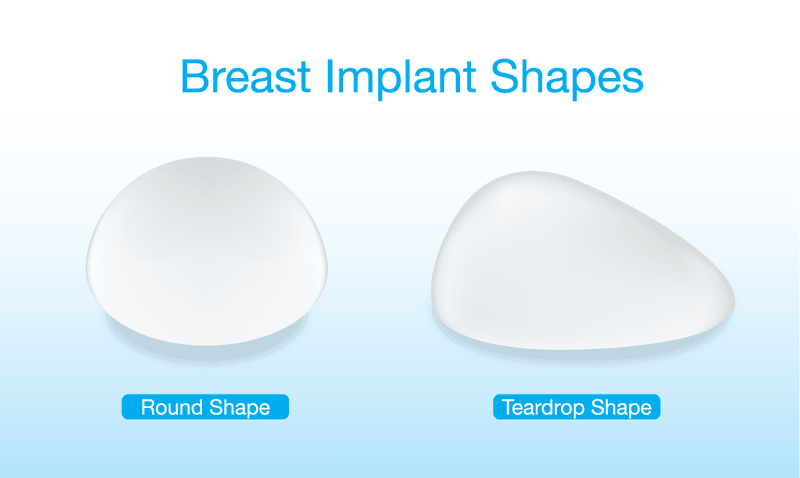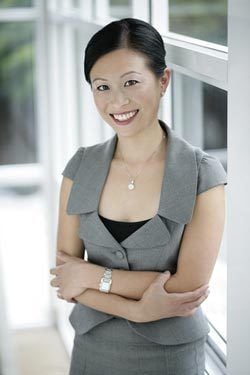Types of Breast Implants - How do I pick?
)
There are different type of breast implants. Implants can be classified by several characteristics:
Implant Fill: silicone or saline
Most implants used these days are silicone implants. Saline implants have been found to have a shorter life span and has issues such as air absorption (resulting in 'sloshing'), rippling. It is also not form stable (shape can be affected by soft tissues of the body). The implants also feel less natural due to the liquidity of water. Silicone implants nowadays have a very high safety standard, as the silicone within the implant are cohesive. This means that the silicone fill is solid rather than liquid, and thus the 'leakage' and rupture rates are low (0.4% per annum), and the implants are more form-stable independent of soft tissue changes.
Implant Covering: textured or smooth
Some studies have shown that textured implants are associated with less capsular contracture (hardening), and rotation, or implant migration. Textured implants also have a slightly thicker capsule, thus there is an argument that it feels firmer. Textured implants have also been implicated in breast implant associated anaplastic large cell lymphoma (BIA-ALCL), however, as the incidence is so rare, many surgeons would still recommend a texture implant over smooth ones for several of the above reasons. To read more about BIA-ALCL, read our blog on ALCL or visit our All About Breast Implant page.
Implant Shape: anatomical or round
Anatomical implants (or pear-shaped implants) can be used for both cosmetic and reconstructive purposes. They only come with textured surface. These implants mimic the natural shape of the breast, thus is very useful in reconstruction after mastectomy where the shape is completely dependent on the implant (because it does not have any natural breast tissue over it). Anatomical implants, however, has an inherent risk of rotation that is, if it rotates, a revision is often required as the breast shape may become odd.
Anatomical implants can be further classified by its height: low, moderate and tall height. This is to accommodate individual variations in chest/trunk length. Some women have a very long chest; in some, the distance from their inframammary fold (under fold of the breast) to the collar bone is longer than the distance from their rib cage to their hip! These patients often need tall anatomical implants to be able to achieve some fullness at the superior pole of the chest wall for a better-defined cleavage. Equally important, in those with short chest wall, a low height implant is necessary to prevent the breast reaching all the way up to the collar bone!
Round breast implants can be textured or smooth, and because it is round, rotation is not an issue, thus, theoretically, the revision rate is much lower. A natural shape can still be achieved with a round implant as the implant is often 80% filled, thus the silicone gathers at the bottom of the implant when upright, giving the implant a natural pear-shape appearance if observed from the side profile; this is especially effective when the implant is placed under the muscle.
Implant Profile: low, moderate, high and ultra-high profile
An implant profile is a measurement of its projection how much it projects forward. The profile affects the shape of the breast, as a low-profile implant often looks less projected, but wider in diameter, thus can give the breast a more 'pancake' look. Whereas a high-profile implant is narrower and projects more, thus giving the breast a more 'rounded' look. Ultra-high profile implants give a very good projection, but to achieve this, the implant is often 100% filled, thus can make the breast much firmer.
Implant Size
Implants range from 125cc, up to 700cc. Sometimes, extraordinary large or small implants can be custom made for specific purposes. It is a common misconception that a certain size implant will give you a certain cup size. The cup size is dependent on a few factors, including the girth and shape of the rib cage, as well as the volume of the natural breast tissue already in place. A person's weight and frame can also affect cup size, as a 200cc implant can look big on a very slim, short individual, but in someone tall or heavier, a 200cc implant will barely make a difference in cup size. To find out what volume would suit your frame and how it would look with your natural breast tissue, two methods are often used. One is for you to try on 'sizers' in a sizing bra. The other is using digital photographs and computer software that can create an estimated image.
To pick the right implant for you, speak to your surgeon. He/she will assess your body shape and type, measure your breast width and height, and estimate your natural breast volume, before recommending a particular type of implant for you. Ask your surgeon the reasons behind their preference and don't forget, one type of implant may look great on one person but may have totally the wrong dimensions on another person's frame.
Breast implant surgery is definitely not one size fits all!
To read more about Implants in our Blogs: CLICK HERE.
Further Information on:
) Author:Dr Lily Vrtik
Author:Dr Lily Vrtik| Tags:plastic surgeryBreast implantsBreast |

